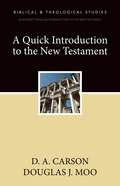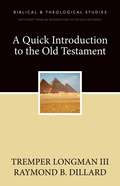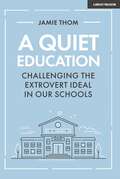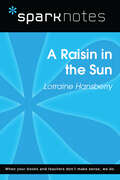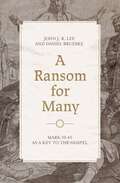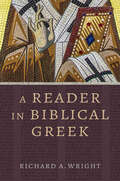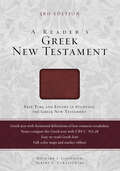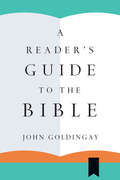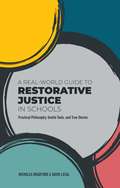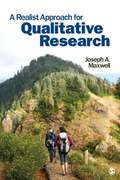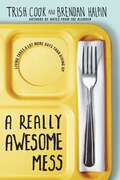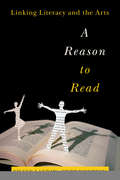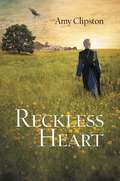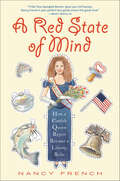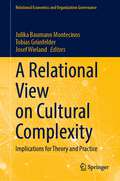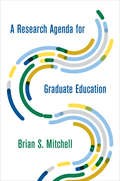- Table View
- List View
A Quick Guide to Meeting the Teachers' Standards Part 1
by Mike LansdownThis is a quick and handy guide to evidencing and meeting Part 1 of the Teachers’ Standards for trainee teachers. It looks at every strand of Part 1 of the Standards, encourages critical reflection throughout and puts pupil learning and progress at the heart of things while detailing how you can best evidence this. It includes: a general introduction to the Standards and how to meet them; a clear explanation of each strand of the Standards in easy to follow English; guidance on the best evidence to select and how to present it; advice on some common pitfalls; space to record your evidence as you go along; a ten-point checklist summarising all the key points in the guide. All trainee teachers have to meet the Teachers’ Standards in order to gain qualified teacher status, yet many are unsure what this entails. A quick guide to Meeting the Teachers’ Standards: Part 1 is very helpful in this respect. Using key words from the Standards, this book helps trainees to understand exactly what they need to do and the evidence that will demonstrate this. The guide is clear, concise and contains useful pointers on things to do and to avoid. It is a most useful resource for anyone embarking on teacher training.Neil Brading, Outset Teachers' Standards Ltd.
A Quick Guide to Special Needs and Disabilities
by Dr Bob BatesA Quick Guide to Special Needs is an easy go-to guide for busy teachers, SENCOs, practitioners and anyone else who is interested in pragmatic solutions to the challenges of teaching children and young people with additional needs. Detailing over 60 conditions which cause people to have additional needs, Bob Bates helps you broaden your understanding of different physical, neurological, psychological, and developmental needs with accessible bite-sized explanations of the conditions, best practice approaches to working with these learners, and how to apply them to your everyday teaching. Each individual need is explained over a 2-page spread and every entry includes: Case studies encouraging you to reflect on real-life situations to understand the impact each condition has on people and how they and their parents deal with it. Do it steps offering a simple step-by-step approach that you can follow in order to meet additional needs arising out of these conditions. Important steps for the classroom specifically for teachers to use. Recommended reading, suggesting books, articles and websites where further information on specific conditions are available. Whether you're a newly qualified or experienced teacher, or simply want to further your understanding on the vast variety of individual needs, this guide is the ideal dip-in dip-out reference point for SEND.
A Quick Guide to Special Needs and Disabilities
by Dr Bob BatesA Quick Guide to Special Needs is an easy go-to guide for busy teachers, SENCOs, practitioners and anyone else who is interested in pragmatic solutions to the challenges of teaching children and young people with additional needs. Detailing over 60 conditions which cause people to have additional needs, Bob Bates helps you broaden your understanding of different physical, neurological, psychological, and developmental needs with accessible bite-sized explanations of the conditions, best practice approaches to working with these learners, and how to apply them to your everyday teaching. Each individual need is explained over a 2-page spread and every entry includes: Case studies encouraging you to reflect on real-life situations to understand the impact each condition has on people and how they and their parents deal with it. Do it steps offering a simple step-by-step approach that you can follow in order to meet additional needs arising out of these conditions. Important steps for the classroom specifically for teachers to use. Recommended reading, suggesting books, articles and websites where further information on specific conditions are available. Whether you’re a newly qualified or experienced teacher, or simply want to further your understanding on the vast variety of individual needs, this guide is the ideal dip-in dip-out reference point for SEND. Also from Bob Bates: Educational Leadership Simplified Learning Theories Simplified
A Quick Introduction to the New Testament: A Zondervan Digital Short
by D. A. Carson Douglas J. MooDerived from D. A. Carson and Douglas J. Moo’s widely adopted textbook, An Introduction to the New Testament, this digital short surveys key critical and interpretive issues in New Testament study. Attention is given to original manuscripts, interpretative traditions, biblical theology, historical criticism, postmodernism, linguistic and social-science approaches to the text, and more. Students of the New Testament will find A Quick Introduction to the New Testament to be a handy yet complete reference tool.
A Quick Introduction to the Old Testament: A Zondervan Digital Short
by Tremper Longman III Raymond B. DillardDerived from Tremper Longman III and Raymond B. Dillard’s widely adopted textbook, An Introduction to the Old Testament, this digital short surveys key critical and interpretive issues in Old Testament study. Attention is given to the most significant historical, archaeological, literary, and theological questions, as well as to the perspective the New Testament brings to the Old. Students of the Old Testament will find A Quick Introduction to the Old Testament to be a handy reference tool.
A Quiet Education: Challenging the extrovert ideal in our schools
by Jamie Thom'A Quiet Education' serves as an unashamed cheerleader for all that is quiet, challenging the myth that collaboration and noise should be at the heart of what happens in schools. It examines how we can ensure more introverted students and teachers can thrive and achieve their potential. It also explores why it is essential that all teachers begin to embrace quieter values: in their classrooms and management of behaviour; in sustaining their own wellbeing; in their desire to reflect meaningfully and improve as a teacher. The final section is an exploration of quieter skills: how we can strengthen our students' metacognitive ability; their ability to listen, pay attention and focus; the quality of independent work we do in the classroom alongside how we can motivate all our students.
A Quiet Education: Challenging the extrovert ideal in our schools
by Jamie Thom'A Quiet Education' serves as an unashamed cheerleader for all that is quiet, challenging the myth that collaboration and noise should be at the heart of what happens in schools. It examines how we can ensure more introverted students and teachers can thrive and achieve their potential. It also explores why it is essential that all teachers begin to embrace quieter values: in their classrooms and management of behaviour; in sustaining their own wellbeing; in their desire to reflect meaningfully and improve as a teacher. The final section is an exploration of quieter skills: how we can strengthen our students' metacognitive ability; their ability to listen, pay attention and focus; the quality of independent work we do in the classroom alongside how we can motivate all our students.
A Raisin In The Sun (Mcdougal Littell Literature Connections)
by McDougal-Littell Publishing StaffThe author writes of her childhood experiences with racism.
A Raisin in the Sun (SparkNotes Literature Guide Series)
by SparkNotesA Raisin in the Sun (SparkNotes Literature Guide) by Lorraine Hansberry Making the reading experience fun! Created by Harvard students for students everywhere, SparkNotes is a new breed of study guide: smarter, better, faster. Geared to what today's students need to know, SparkNotes provides: *Chapter-by-chapter analysis *Explanations of key themes, motifs, and symbols *A review quiz and essay topicsLively and accessible, these guides are perfect for late-night studying and writing papers
A Ransom for Many: Mark 10:45 as a Key to the Gospel
by John J. R. Lee Daniel Brueske"Not to be served, but to serve" Unlike the Gospels of Luke and John, Mark's Gospel never explicitly reveals any authorial intent. In A Ransom for Many, John J. R. Lee and Daniel Brueske identify Mark 10:45 as the heart of Mark's Gospel. This single verse is the pivot point of Mark's structure, themes, and message. Mark 10:45 is the key that unlocks the Gospel's unique focus on true discipleship. Learn how Jesus's faithfulness is both a summons and pattern for all who carry their cross and follow him.
A Reader in Biblical Greek (Eerdmans Language Resources)
by Richard A. WrightA graduated reader of biblical Koine Greek for students, clergy, and scholars who have completed at least one year of Greek studies. This intermediate reader is for students, clergy, and scholars who have completed at least one year of Greek instruction and want to build reading proficiency. Through twenty-nine texts from the New Testament, the Septuagint, and noncanonical early Christian writings, readers will be exposed to a variety of different genres and authors while still being given enough content from each author to become acquainted with that author&’s individual style. Notes within each selection gloss low-frequency words and clarify syntactical intricacies, and each new section of texts gradually increases in its level of difficulty, so that lessons can be worked through sequentially or as stand-alone exercises, as needed. Wright&’s selections are all texts that Christians in the fourth century CE would have read, with intertextual connections between them that will stimulate discussion and reflection on the development of important ideas in the early church. Thus, this useful resource encourages progress both in Koine reading proficiency and in knowledge of Christian tradition.
A Reader's Greek New Testament: Third Edition
by Albert L. Lukaszewski Richard J. GoodrichA Reader&’s Greek New Testament: Third Edition saves time and effort in studying the Greek New Testament. If a Greek word appears in the New Testament fewer than 30 times, then a definition is provided. This serves as an aid when you encounter less common vocabulary, allowing you to focus on reading, comprehension, parsing, and grammatical issues. You no longer have to interrupt your reading, searching through a lexicon! Featuring a handsome Italian Duo-Tone™ binding, A Reader&’s Greek New Testament: Third Edition is a practical, attractive, and surprisingly affordable resource.Features of this third edition include: footnoted definitions of all words occurring 30 times or less; mini-lexicon of all words occurring more than 30 times; Greek text underlying the New International Version; footnotes comparing the Greek text with the critical text of UBS5/NA28; 4 pages of full-color maps; marker ribbon; and easy-to-read Greek fonts.
A Reader's Guide to the Bible
by John GoldingayApproaching the Bible for the first time can be intimidating. At sixty-six books, nearly 800,000 words, and numerous kings, prophets, and deliverers, as well as priests and apostles, where should you begin? In what order should you read it? Why are there narratives here and over there, but other things mixed between? And is there an alternative to reading the Bible from Genesis to Revelation? In A Reader’s Guide to the Bible John Goldingay places the biblical books in their times and settings, and then lays out a memorable pattern for understanding the Bible. Three categories of biblical books—story, word, and response—form three doors into the cathedral that is the Bible: the story of God and his people, the word of God to his people, and the people’s response to God. Whether you are a person of Christian faith or other faith, or no faith at all, here is a reliable guide to exploring the Bible. Written by a highly accomplished biblical scholar, A Reader’s Guide to the Bible joins a clear and direct style with a maestro’s touch.
A Real Pal
by Barbara W. MakarDecodable Storybooks 2A accompany More Workbook 2 and provide additional opportunity to apply the phonetic concepts introduced in Workbook 2 to connected text. The storybooks use the same vocabulary as Workbook 2 and Storybooks 2 with the addition of one sight word was. Storybooks 2A are an excellent tool to reinforce the skills from Workbook 2 and can be used with either Workbook 2 or More Workbook 2"--Epsbooks.com.
A Real-World Guide to Restorative Justice in Schools: Practical Philosophy, Useful Tools, and True Stories
by Nicholas Bradford David LeSalThis book is designed to help you navigate the challenges and joys of building and maintaining a healthy restorative ecosystem in your school, while providing concrete tools and real-world stories to guide you through the process.Traditional methods of discipline are commonly found to be ineffective, and this book shows how restorative justice can benefit schools in a huge variety of ways, such as decreasing the need for suspensions, increasing academic outcomes, and improving the health of your whole school community.Written by the founder and the education director of the National Center for Restorative Justice, each and every chapter is packed with expertise on everything from carrying out the stages of a restorative circle to understanding the importance of conflict. The authors pull no punches in showing that this work is not always easy, but their passion for restorative justice shines out of every page, demonstrating just how valuable this approach can be in bringing the absolute best out of your students and school.
A Realist Approach For Qualitative Research
by Joseph A. MaxwellThis ground-breaking book makes the case for adopting a realist philosophical perspective for qualitative research. Joseph Maxwell argues for critically applying a realist ontology to a number of important theoretical and methodological issues. This can provide a stronger justification for what qualitative researchers do, he contends, and significantly contribute to current theories and practices. The book outlines critical realism and considers its implications for how we conceptualize meaning and culture, causation, and diversity. The author applies critical realist ideas and approaches to the design and methods of qualitative research, and presents two in-depth case studies of projects he conducted, describing how realist (and other) perspectives informed the research, the methods, and the conclusions.
A Really Awesome Mess
by Brendan Halpin Trish CookTwo teenagers. Two very bumpy roads taken that lead to Heartland Academy. After his parents' divorce, Justin is on rocky mental ground. But when a handful of Tylenol lands him in the hospital, he has really hit rock bottom. A scandalous photo of Emmy leads to vicious rumors around school, but things get worse when she threatens the boy who started it all on Facebook. Justin and Emmy arrive at Heartland Academy, a reform school that will force them to deal with their issues. Along the way they will find a ragtag group of teens who are just as broken, stubborn, and full of sarcasm as themselves. A funny, sad, and remarkable story, A Really Awesome Mess is a journey of friendship and self-discovery.
A Reason to Read: Linking Literacy and the Arts
by Shirley Brice Heath Eileen Landay Kurt WoottonA Reason to Read is the culminating work of the ArtsLiteracy Project, an ambitious and wide-ranging collaborative that aims to promote literacy through rich and sustained instruction in the arts. At the heart of the book is the "Performance Cycle," a flexible framework for curriculum and lesson planning that can be adapted to all content areas and age groups. Each of the book's main chapters delineates and explores a particular component of the cycle. A practical, readable, and inspiring book, A Reason to Read will be of immeasurable help to school teachers, education leaders, and all who have a stake in promoting literacy and the arts in today's schools.
A Reason to Read: Linking Literacy and the Arts
by Eileen Landay Kurt WoottonA Reason to Read is the culminating work of the ArtsLiteracy Project, an ambitious and wide-ranging collaborative that aims to promote literacy through rich and sustained instruction in the arts. At the heart of the book is the &“Performance Cycle,&” a flexible framework for curriculum and lesson planning that can be adapted to all content areas and age groups. Each of the book&’s main chapters delineates and explores a particular component of the cycle. A practical, readable, and inspiring book, A Reason to Read will be of immeasurable help to school teachers, education leaders, and all who have a stake in promoting literacy and the arts in today&’s schools.
A Reckless Heart
by Amy ClipstonSlipping. Lydia Bontrager’s youngest sister is frighteningly ill, and as a good Amish daughter, it falls to Lydia to care for her siblings and keep the household running, in addition to working as a teacher’s assistant and helping part time at her grandmother’s bakery. Succumbing to stress, Lydia gives in to one wild night and returns home drunk. The secret of that mistake leaves Lydia feeling even more restless and confused, especially when Joshua, the only boy she’s ever loved, becomes increasingly distant. When a non-Amish boy moves in nearby, Lydia finds someone who understands her, but the community is convinced Lydia is becoming too reckless. With the pressures at home and her sister’s worsening condition, a splintering relationship with Joshua, and her own growing questions over what is right, Lydia could lose everything that she’s ever held close.
A Red State of Mind: How a Catfish Queen Reject Became a Liberty Belle
by Nancy FrenchA columnist for the Philadelphia Daily News, Nancy French blends her hilarious fish-out-of-water tale with humorous observations about the South's obsession with everything from church attendance to the blue-state notion that red staters think as slowly as they speak.
A Reflective Planning Journal for School Leaders: With Insights and Tips From Award-Winning Principals
by Olaf JorgensonThis concise guide offers monthly themes for reflection and professional development, advice from award-winning principals, space for planning and goal setting, and suggestions for increasing parent involvement.
A Relational View on Cultural Complexity: Implications for Theory and Practice (Relational Economics and Organization Governance)
by Josef Wieland Julika Baumann Montecinos Tobias GrünfelderThis book explores the conceptual and practical implications of applying a relational view to cultural complexity. The authors take the findings of an international and interdisciplinary Delphi study on transcultural competence as a starting point and offer further analysis and interpretation from their specific perspectives. Written by experts from a variety of disciplines, the book discusses the potential contributions of a relational approach to understanding and strengthening individuals and organizations in their contexts. Through various conceptual chapters, case studies and field reports, it explores the role and nature of commonalities for cooperation in contexts of cultural complexity and discusses the relationship between differences and commonalities, as well as the implications for relational leadership and management. The book is divided into four parts, the first of which introduces readers to the relational view. In turn, the second part elaborates on transcultural competence, while the third presents various case studies and field reports on experience-based learning and relationality in culturally complex settings. Finally, the fourth part sheds new light on relational leadership and the role of commonalities in organizational practice. As such, this book will appeal to scholars and practitioners in the areas of cultural and relational economics, intercultural communication, business strategy and leadership, and organizational studies.
A Republic, If We Can Teach It: Fixing America's Civic Education Crisis
by David Davenport Jeffrey SikkengaAmerica faces a crisis in civic education that imperils the long-term health of our country. Too many Americans—especially young people—do not have the knowledge of our history and principles necessary to sustain our republic.Recent national test results reveal the sad state of civic education in our schools. The 2022 report of the National Assessment of Educational Progress showed that only 22 percent of eighth graders tested were &“proficient&” or better in their knowledge of civics, and proficiency in US history dropped to an anemic 13 percent. The Annenberg Policy Center reported in 2019 that only 39 percent of Americans could name the three branches of government, while its 2017 study showed that 37 percent could not name a single right in the First Amendment. How can we &“keep&” a republic, as Benjamin Franklin put it, if we don&’t know what a republic is? At a deeper level, the crisis is not simply about facts and information. If the next generations of Americans do not come to understand that our history and principles are good and that they merit their affection, our experiment in self-government could fail. Action is needed now to reverse the trend.
A Research Agenda for Graduate Education
by Brian S. MitchellPost-baccalaureate education continues to expand at an accelerated rate as new degree programs are developed, enrollments rise, online instruction matures, and the number of institutions offering advanced degrees increases. Our level of understanding of graduate and professional education has not kept pace, especially in comparison to the depth of scholarship available on primary, secondary, and baccalaureate education. A Research Agenda for Graduate Education is a call to action for the graduate education community to commit to the same level of research and scholarship on itself that it expects from its students in their own disciplinary training. In this book, Brian S. Mitchell explores the current literature on graduate education for theoretical models that need testing, previous research that needs updating, and future research that may be explored. The book is divided into research questions on the science of graduate learning, graduate student career preparation, and graduate program improvement, with special attention placed on current research topics. Targeted at higher education researchers, including educational psychologists and disciplinary-based researchers specializing in graduate education, this volume will also be of interest to funding agencies, university administrators, and faculty mentors.


